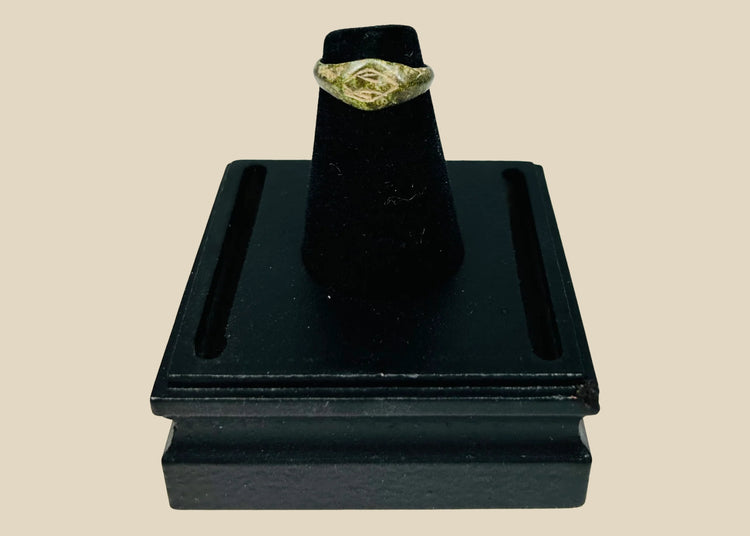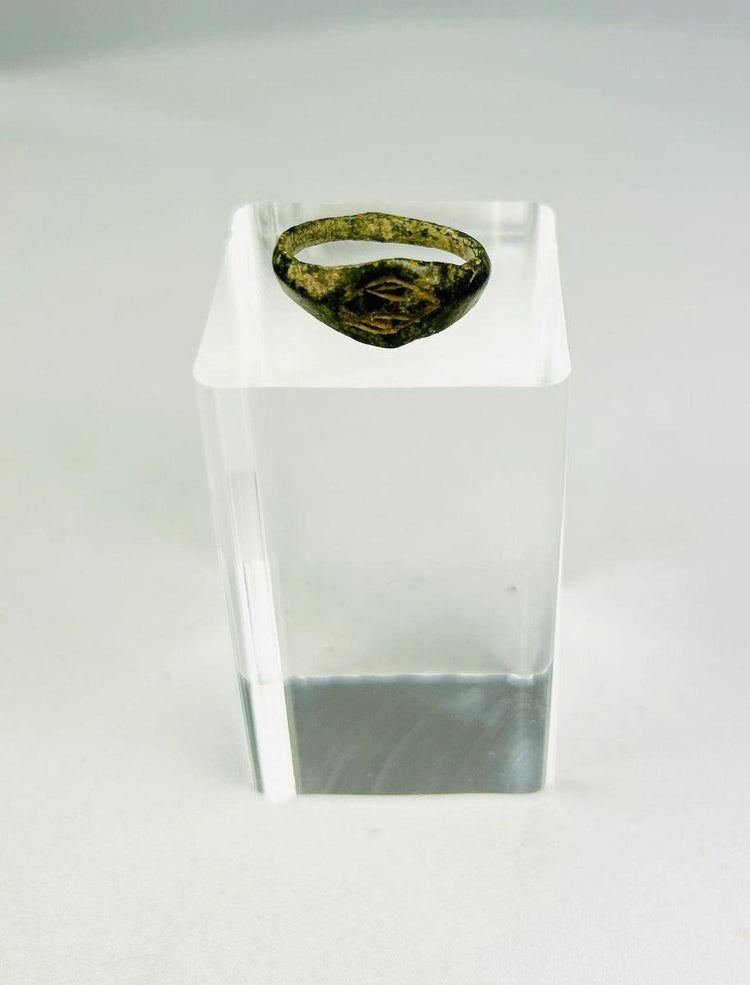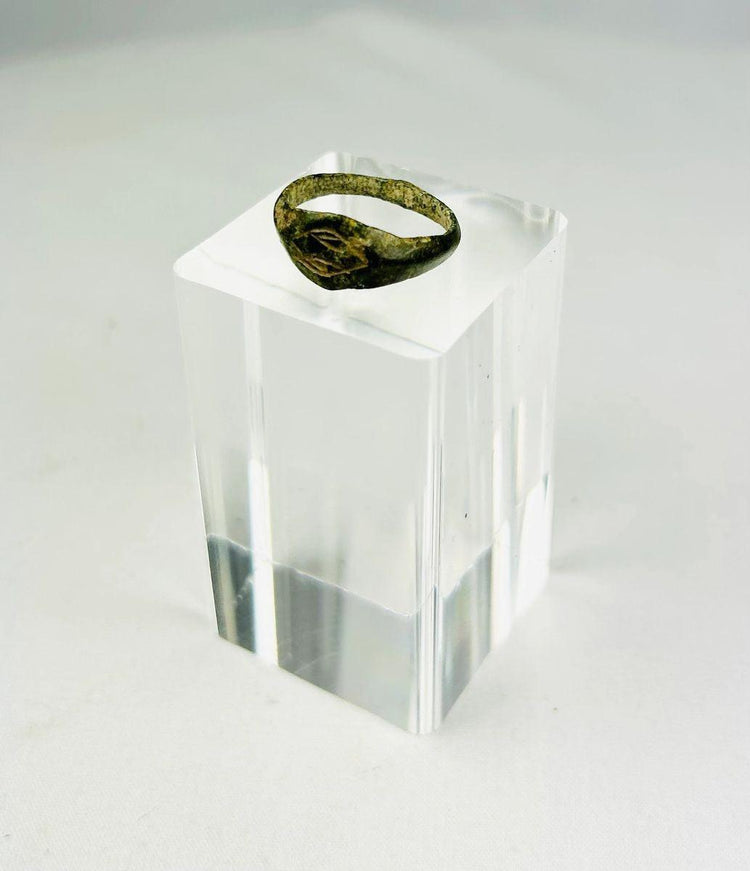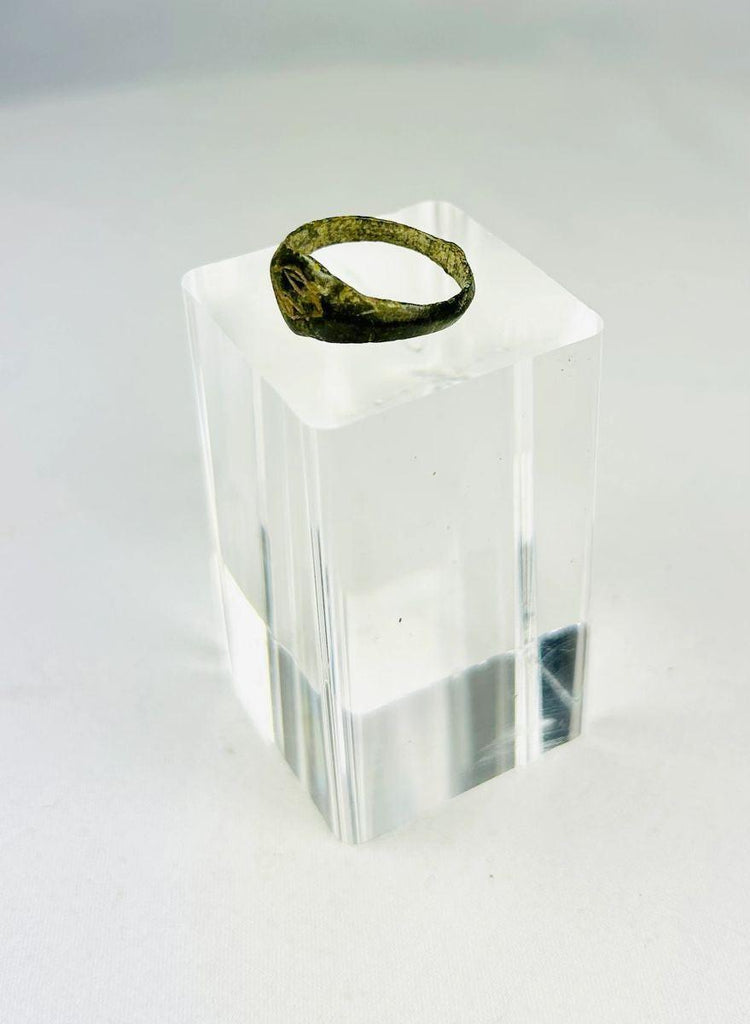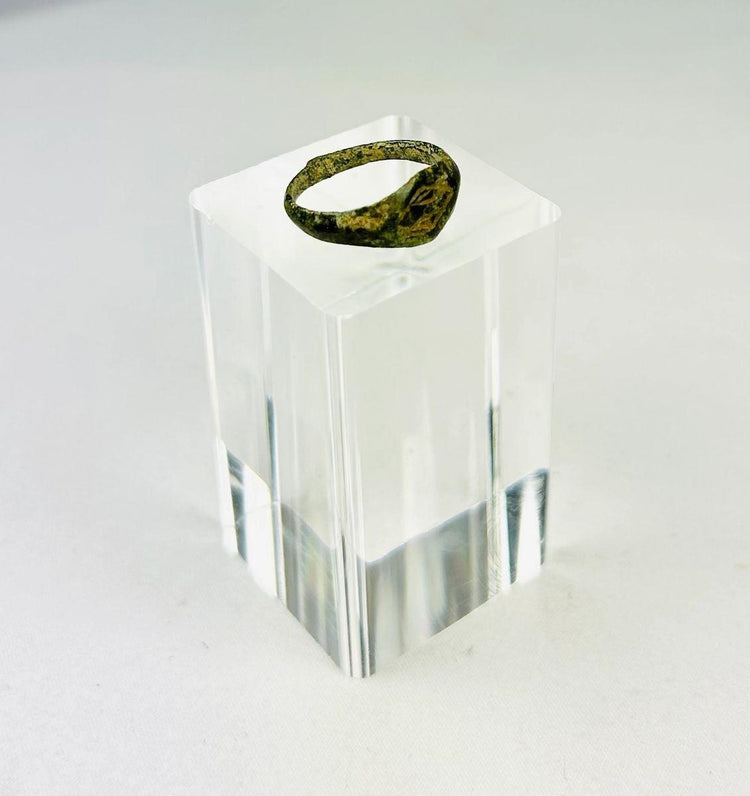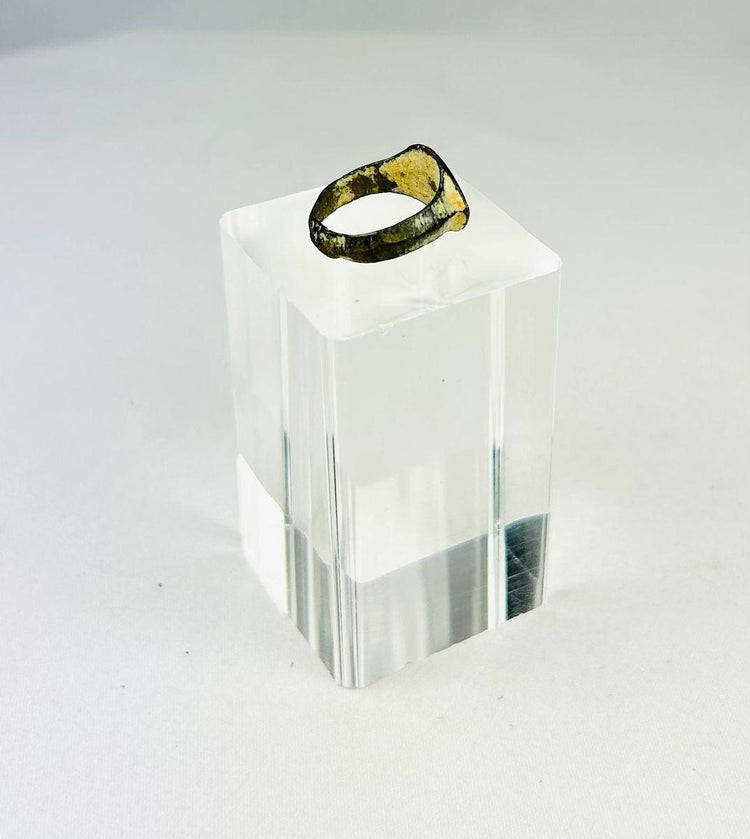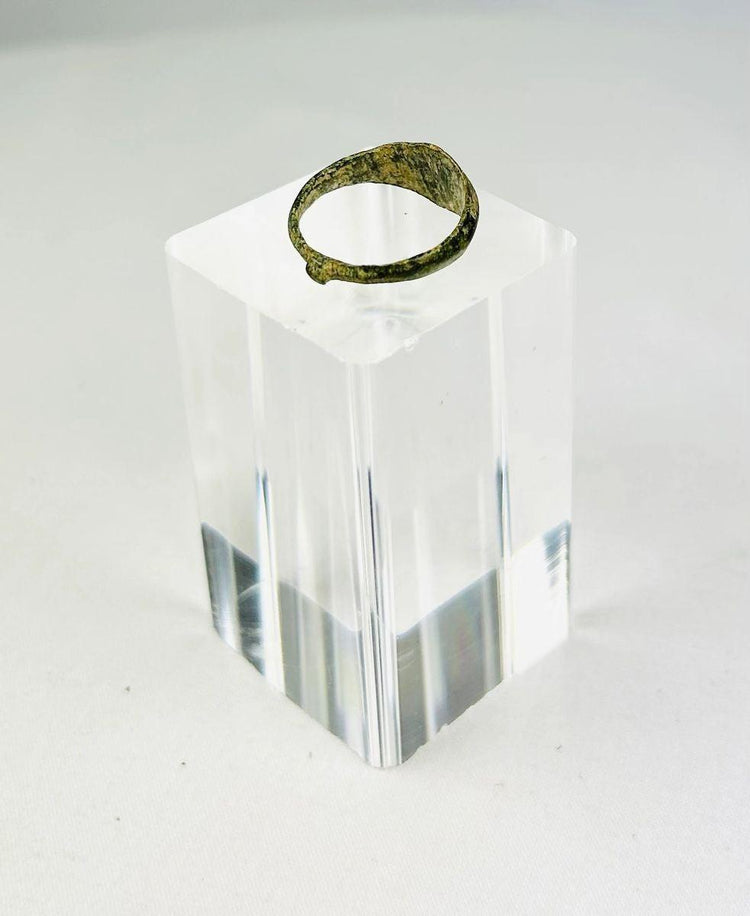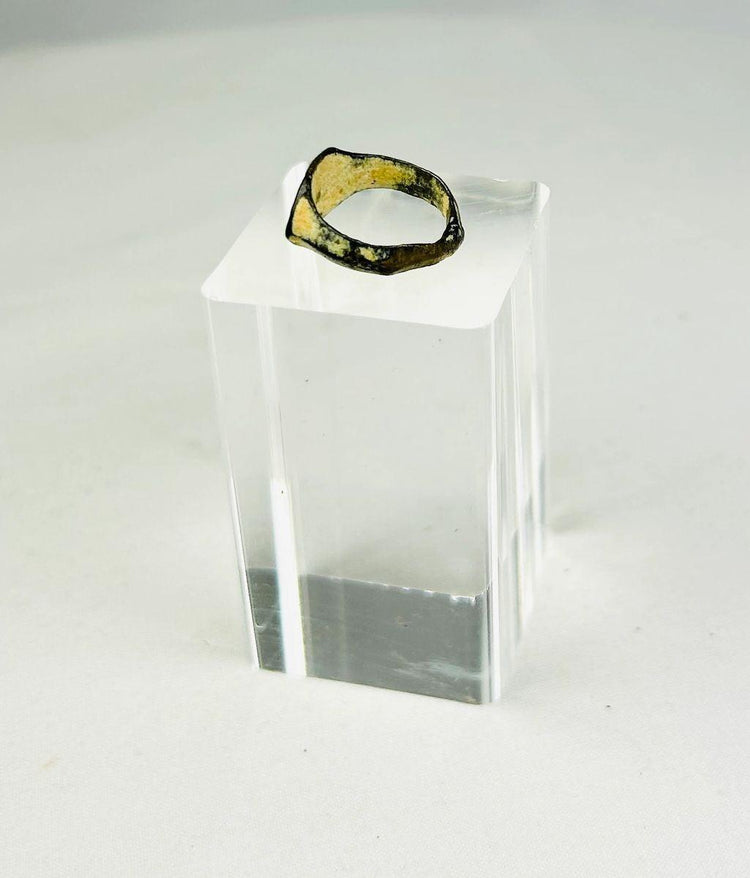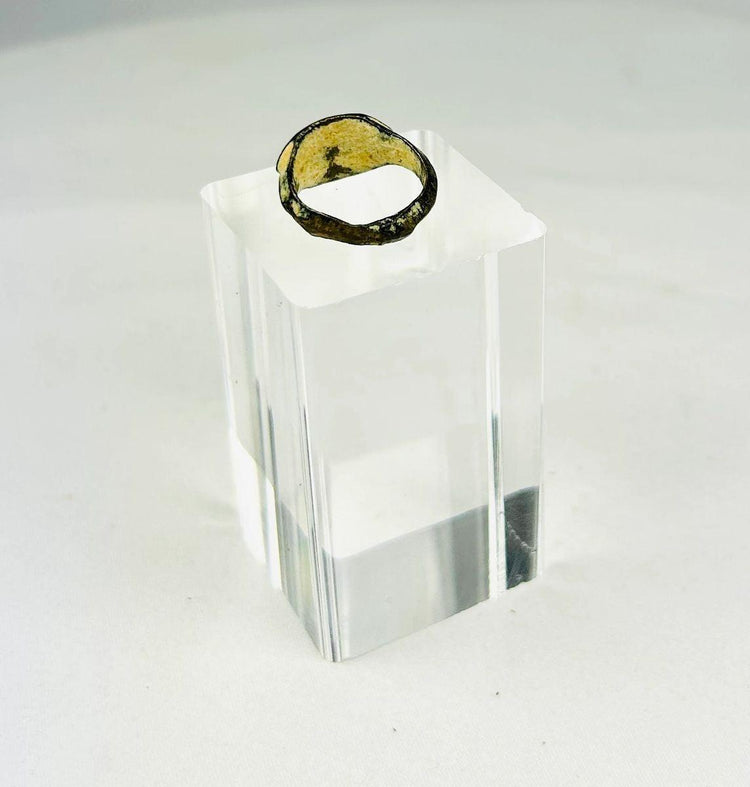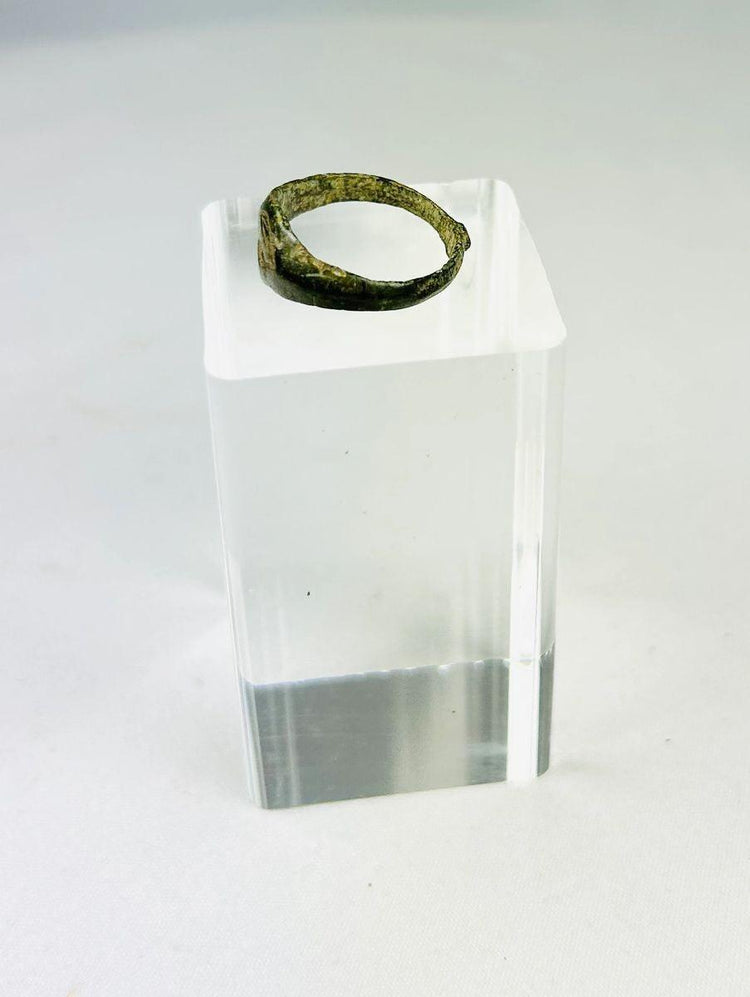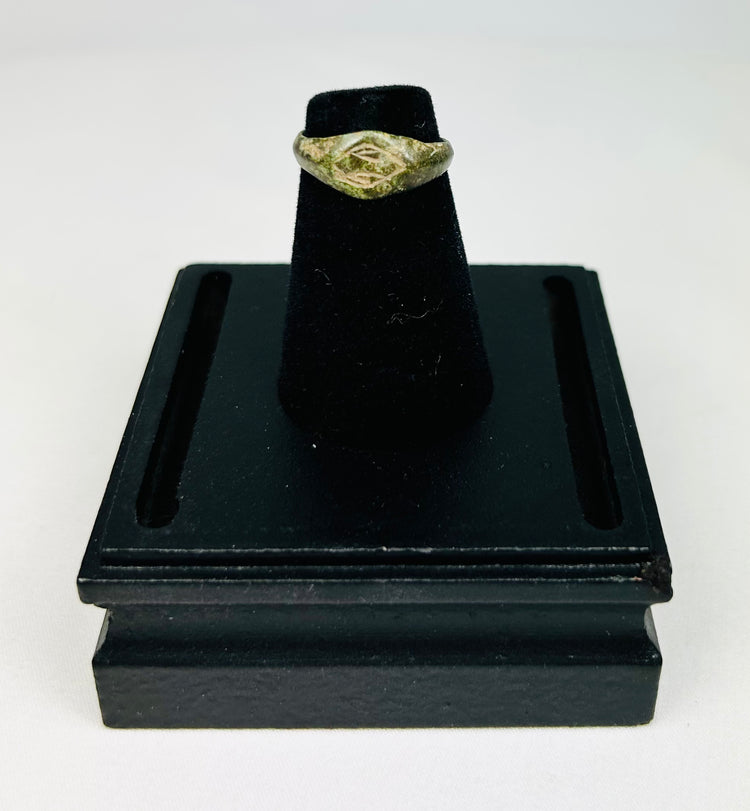Geometric Intaglio Ring | Ancient Roman Bronze | Circa 2nd–3rd Century CE
Description
More
Less
Historical Context & Origin
Region: Roman Empire
Material: Bronze
Period: Imperial Roman Period, circa 100–300 CE
Description
This finely preserved Ancient Roman bronze signet ring features a classic oval bezel engraved with a geometric intaglio design, forming a diamond or lozenge motif. Such engravings often symbolized personal identity, authority, or familial affiliation. The ring is hand-cast in bronze, with a slender, tapered band that balances function and elegance. Its surface exhibits a rich green patina and burial mineralization, attesting to centuries of age and preservation.
Features
- Authentic ancient bronze construction with natural patina
- Oval bezel engraved with geometric intaglio design
- Slender, tapered band typical of Roman craftsmanship
- Burial mineralization and surface wear consistent with antiquity
Cultural Significance
Roman rings were more than decorative—they functioned as seals, pressed into wax or clay to validate documents and transactions. Beyond legal utility, they served as social markers, signifying profession, military service, or family lineage. This example offers a tangible connection to Roman bureaucratic, legal, and personal life.
Condition
Structurally sound with no modern restoration. Surface shows wear and patina in greenish-brown hues from long-term burial. The intaglio engraving remains visible though softened by time.
Dimensions (approximate)
Ring Size: US 5.25
Age
Estimated 1,700–1,900 years old (Imperial Roman Period)
Description
Historical Context & Origin
Region: Roman Empire
Material: Bronze
Period: Imperial Roman Period, circa 100–300 CE
Description
This finely preserved Ancient Roman bronze signet ring features a classic oval bezel engraved with a geometric intaglio design, forming a diamond or lozenge motif. Such engravings often symbolized personal identity, authority, or familial affiliation. The ring is hand-cast in bronze, with a slender, tapered band that balances function and elegance. Its surface exhibits a rich green patina and burial mineralization, attesting to centuries of age and preservation.
Features
- Authentic ancient bronze construction with natural patina
- Oval bezel engraved with geometric intaglio design
- Slender, tapered band typical of Roman craftsmanship
- Burial mineralization and surface wear consistent with antiquity
Cultural Significance
Roman rings were more than decorative—they functioned as seals, pressed into wax or clay to validate documents and transactions. Beyond legal utility, they served as social markers, signifying profession, military service, or family lineage. This example offers a tangible connection to Roman bureaucratic, legal, and personal life.
Condition
Structurally sound with no modern restoration. Surface shows wear and patina in greenish-brown hues from long-term burial. The intaglio engraving remains visible though softened by time.
Dimensions (approximate)
Ring Size: US 5.25
Age
Estimated 1,700–1,900 years old (Imperial Roman Period)
You May Also Like




























